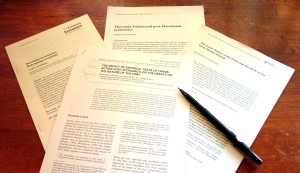Saul Alinsky is all over the presidential election this year. This despite the fact that he’s not running or consulting with any campaign—he died forty years ago, after all.
But Alinsky’s name has a particular symbolic meaning in American politics. The power of Alinsky’s reputation, decried by some Catholics, is only possible because of Alinsky’s outsize success sponsored by—you guessed it—Catholics. His early organizing work was made possible through financial and vocal support of Catholics in Chicago and his followers helped train Cesar Chavez and Dolores Huerta.
The Alinsky that critics object to is a stereotyped image in which power-at-any-costs disregards a concern for humans at the root of social structures, sacrificing a concern for a robust common good for a tactical win in the arena of politics. (This is the not-so-subtle message that is meant to be attached to Barack Obama, given his background in community organizing.) This version of Alinsky might exist in some organizations and movements, but then again these same organizations might not last or be effective for long with this style. Alinsky, his legacy, and his importance to the Catholic Church is a bit (actually a lot) more complicated. Continue reading



